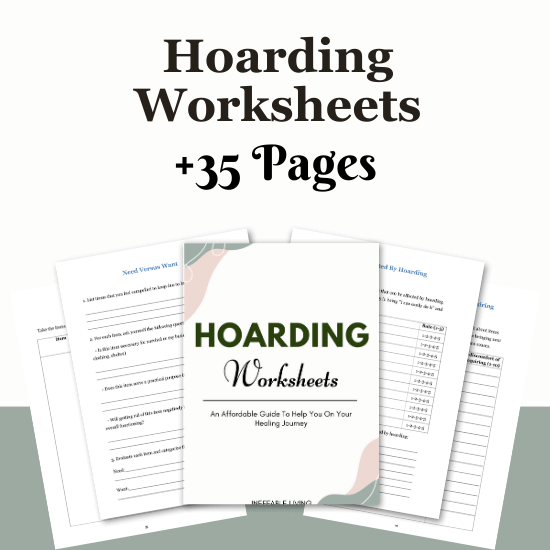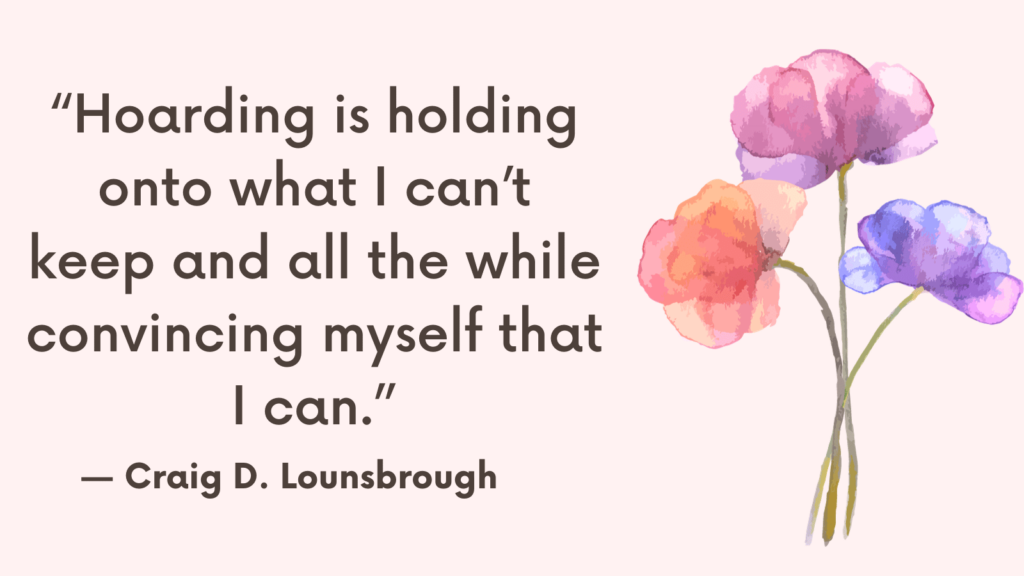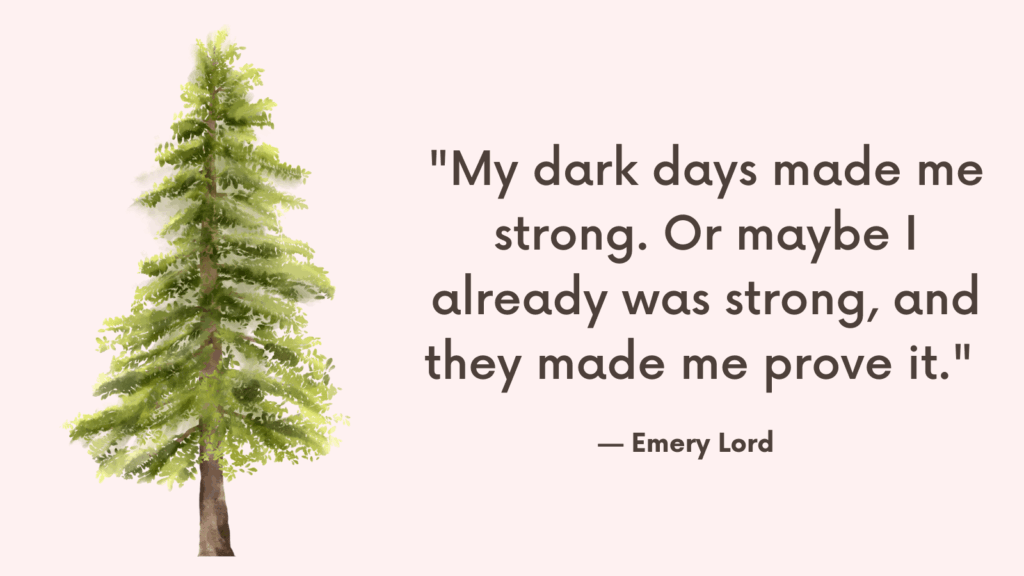In this post, you’re going to learn all about hoarding and its types.
What Is Hoarding?
Hoarding is a complex psychological condition characterized by the persistent difficulty discarding or parting with possessions, regardless of their actual value.
This behavior results in the accumulation of a large number of items, leading to clutter and disorganization within living spaces.
Hoarding can significantly impact an individual’s daily functioning, social relationships, and overall well-being.
From a psychological perspective, hoarding is often associated with the following key features:
1. Excessive Acquisition: Individuals with hoarding tendencies may compulsively acquire items, often far beyond what is necessary or practical. The act of acquiring new possessions provides a sense of comfort or relief, contributing to the accumulation of belongings over time.
2. Difficulty Discarding: Hoarders experience considerable distress or anxiety when faced with the prospect of discarding possessions. Items are often perceived as essential, valuable, or potentially useful in the future, leading to an inability to declutter living spaces.
3. Cluttered Living Spaces: Hoarding behavior results in excessive clutter, making it challenging to use and navigate living areas effectively. Accumulated possessions can impede normal activities such as cooking, cleaning, and even moving about the home.
4. Functional Impairment: Hoarding can lead to significant functional impairment, impacting an individual’s ability to maintain a safe and healthy living environment. Basic tasks such as cooking, bathing, and sleeping may be hindered by the accumulated clutter, affecting overall quality of life.
5. Emotional Distress: Hoarding often coexists with emotional distress, including feelings of shame, embarrassment, and isolation. Individuals may also experience anxiety, depression, or difficulty maintaining social connections due to the impact of hoarding on their lives.
Types of Hoarding
1. Standard Hoarding
This type of hoarding is characterized by the excessive acquisition of items, regardless of their practical utility or value.
Individuals who engage in standard hoarding may feel a strong compulsion to acquire and save a wide range of possessions, often leading to cluttered living spaces and difficulty discarding items.
2. Animal Hoarding
Animal hoarding involves the accumulation of a large number of pets or animals, often beyond the individual’s capacity to provide adequate care and living conditions.
This form of hoarding can result in neglect and suffering for the animals involved, as well as significant health and safety concerns for the hoarder and their environment.
3. Information Hoarding
Information hoarding pertains to the excessive gathering and retention of documents, newspapers, books, or digital data.
Individuals exhibiting this behavior may have a strong attachment to information and struggle to discard materials, leading to overwhelming amounts of paper or digital clutter in their living or workspaces.
4. Food Hoarding
Food hoarding involves the excessive stockpiling or accumulation of perishable and non-perishable food items.
Individuals who engage in food hoarding may experience intense anxiety related to food scarcity, leading them to accumulate excessive quantities of food, often beyond practical consumption or expiration dates.
5. Trash Hoarding
Trash hoarding, also known as syllogomania, refers to the persistent accumulation of items that others would typically consider waste or refuse.
Individuals with this hoarding subtype may find it challenging to discard items such as old containers, packaging materials, or items commonly perceived as trash, leading to unsanitary and hazardous living conditions.
6. Sentimental Hoarding
Sentimental hoarding involves the excessive attachment to sentimental or emotionally significant items, such as gifts, mementos, and personal belongings with nostalgic value.
Individuals with this hoarding subtype may struggle to part with possessions due to strong emotional connections, leading to clutter and difficulty maintaining living spaces.
Related: Best 6 Ways to Let Go of Wanting to Control Everything
How to Break Free from Hoarding?
#1. Psychological Interventions
1. Cognitive-Behavioral Therapy (CBT)
CBT is a widely recognized and effective treatment for hoarding disorder. This therapeutic approach aims to address maladaptive thought patterns and behaviors that contribute to hoarding tendencies.
Through CBT, individuals can learn to challenge distorted beliefs about possessions, develop decision-making skills related to discarding items, and explore alternative coping strategies for managing distress.
2. Exposure Therapy
Exposure therapy involves gradually exposing individuals to the distress they experience when considering discarding possessions.
By systematically and safely confronting the anxiety associated with parting with items, individuals can learn to tolerate discomfort and reduce the overwhelming emotional attachment to belongings.
3. Mindfulness-Based Interventions
Incorporating mindfulness practices can help individuals increase awareness of their hoarding-related thoughts and emotions without judgment.
Mindfulness techniques can promote a greater sense of emotional regulation and reduce impulsive acquisition and saving behaviors.
4. Emotion Regulation Strategies
Many individuals with hoarding disorder experience intense emotional attachments to possessions, and their hoarding behavior often serves as a way to cope with distress.
Learning emotion regulation skills can help individuals manage their feelings in healthier ways, reducing the reliance on hoarding as a coping mechanism.
#2. Behavioral Strategies
1. Gradual Exposure and Discarding
Encouraging individuals to gradually practice discarding possessions that hold less emotional significance can be an important step in the treatment process.
Starting with items that evoke minimal distress and gradually progressing to more challenging possessions can help individuals build their capacity for decluttering.
2. Organizational Skills Training
Teaching organization and categorization skills can facilitate the process of sorting and managing possessions.
Implementing practical strategies for labeling, storage, and spatial organization can help individuals maintain a sense of order and clarity as they work to declutter their living spaces.
3. Harm Reduction Approach
Recognizing that complete decluttering may not be immediately achievable, a harm reduction approach emphasizes incremental progress and risk reduction.
Focusing on making small, manageable changes over time can be more sustainable and less overwhelming for individuals with hoarding disorder.
4. Delayed Acquiring
Encouraging individuals to implement a waiting period before acquiring new items can help disrupt impulsive shopping or acquiring behaviors.
This strategy provides an opportunity for individuals to consider the necessity and utility of potential purchases, reducing the influx of new possessions into their living spaces.
Related: Circle of Control (+FREE Worksheet Download PDF)
#3. Environmental Considerations
1. Home Safety Assessment
Conducting a thorough assessment of the individual’s living environment is crucial to identify and address safety hazards associated with hoarding.
Collaborating with professional organizers, social workers, or occupational therapists can help create a safer and more functional living space.
2. Decluttering Support
Providing practical assistance with decluttering efforts, such as enlisting the support of professional organizers, family members, or mental health professionals, can facilitate the sorting and removal of excessive possessions while offering emotional support throughout the process.
3. Environmental Modification
Implementing structural changes to the home environment, such as installing additional storage solutions, optimizing space utilization, and improving accessibility, can contribute to the maintenance of an organized and manageable living space.
#4. Social Support and Connection
1. Family Involvement
In many cases, hoarding disorder can impact family dynamics and relationships.
Involving family members in the treatment process and providing education about hoarding disorder can foster understanding and collaboration, creating a supportive network for the individual seeking to address their hoarding behaviors.
2. Peer Support Groups
Engaging in peer support groups or group therapy with individuals who have experienced similar challenges with hoarding can offer a sense of validation, shared understanding, and encouragement.
Connecting with others who are on a similar journey can provide a valuable source of empathy and motivation.
3. Community Resources
Exploring community resources, such as hoarding task forces, social services, and local mental health organizations, can provide access to specialized support, educational materials, and practical assistance tailored to addressing hoarding-related concerns.
Related: Top 15 Resilience Journal Prompts

Conclusion
Overcoming hoarding is a gradual and often challenging process that requires patience, dedication, and ongoing support.
While the strategies outlined here offer a foundation for addressing hoarding disorder, seeking professional guidance from mental health professionals, including psychologists, psychiatrists, and social workers, is crucial for developing a personalized treatment plan that aligns with the individual’s unique needs and circumstances.


